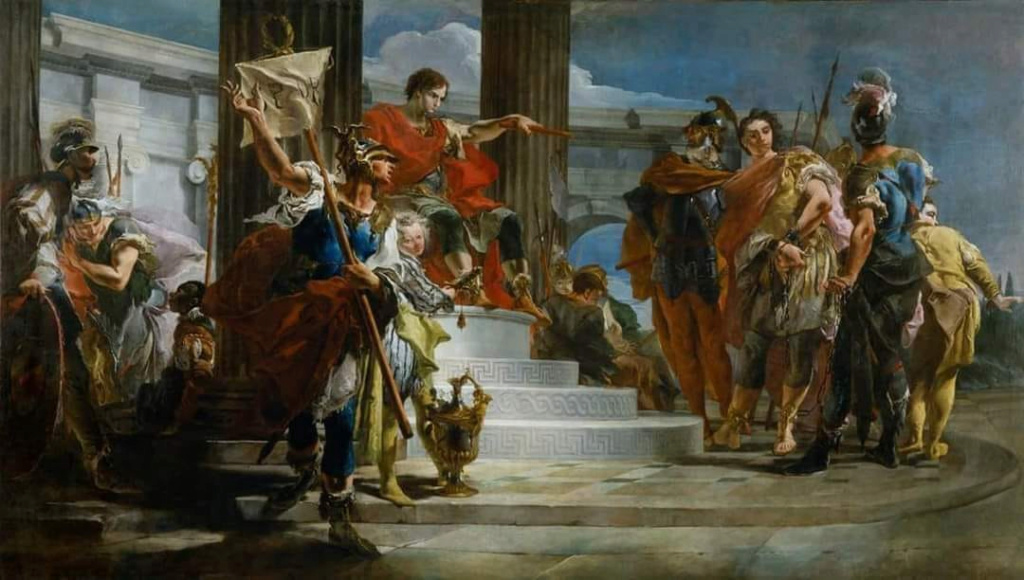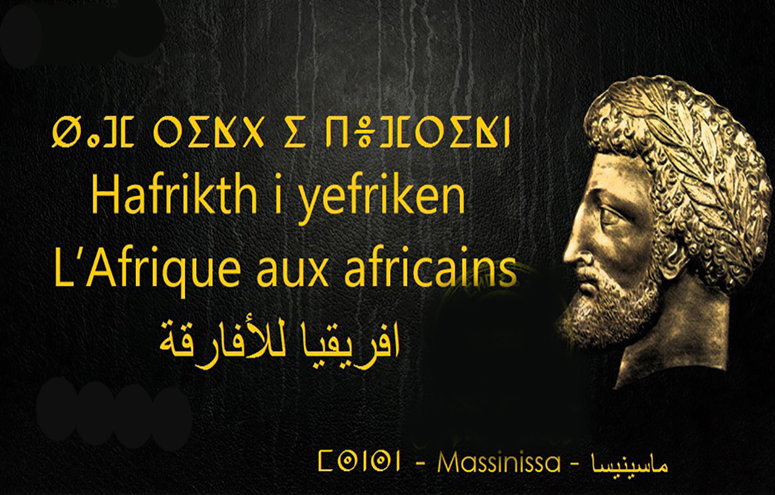The release of Prince Massiva

Dear friends of Algeria and North Africa, allow me this evening to take you on a journey once again through the Massinissian gesture by offering to your amazed eyes yet another Italian painting relating to the history of the great Agellid, representing this time the liberation of Prince Massiva by General Scipio, work by Giovanni Battista Tiepolo dated between 1719 and 1721, now kept at the Walters Art Museum in Baltimore.
You remember that during my communication on the revision of the Algerian Constitution I was questioned on the subject of the friendship between the Massyl Massinissa and the Roman Scipio, as if summoned to answer before the court of History for facts taking place more than 2,200 years ago and which still arouse heightened passions within Algerian society today. So let me share with you my answer:

Son of the agellid Gaia, Massinissa had been dispatched to Iberia, in order to wage war there with his Numidian horsemen alongside the Carthaginian troops against the Romans, his father then being an ally of Carthage. But after a defeat of the Carthaginian, Iberian and Numidian troops, during the battle of Baecula in 208 BC, among the captives taken on this occasion, one of them attracted the attention of the Roman general , Scipio, by his youth and his bravery. It was Massiva, grandson of the agellid Gaia and nephew of Massinissa who had overstepped the orders of his uncle who then sought to protect him from the horrors of war. The Roman general decided to free Massiva and return it to Massinissa, even though Scipio's father had died fighting against the Carthaginians, Iberians and Numidians. Later, the memory of this liberation was to encourage contact in Spain between Massinissa and Scipio, Massyl having not forgotten Scipio's gesture by therefore changing alliance for the benefit of Rome.

This reversal of alliance constituted a mark of pragmatism, even realpolitik. Remember, in fact, as Cornelius reminds us in his verses, that the Carthaginians were themselves foreigners in Africa. Originally welcomed by the Berbers, however, from the 5th century BC they stopped paying them tribute, even extending their domination over the interior lands. You also remember that Massinissa sought to reconquer the land of his ancestors . Between Carthage and Rome, the most distant power for Massinissa was Rome, absent at that time from Africa, while Carthage encroached on the land of his ancestors. The alliance between Massinissa and Scipio, born at the origin of the liberation of Massiva, perhaps favored by the marriage of the Carthaginian Sophonisbe, who would have been promised to him in his youth, to his rival Syphax, and then accentuated by the loss of his kingdom, thus participated in the great design attributed to the Numidian agellid: returning Africa to the Africans.
Later, Carthage destroyed and the Romans in Africa, Massinissa's grandson, Jugurtha, after having been their ally for a time, was to become their fiercest enemy, inspiring Jean Amrouche in the 20th century, in a North Africa colonized, its most famous text: “The Eternal Jugurtha”.
Massensen Cherbi

